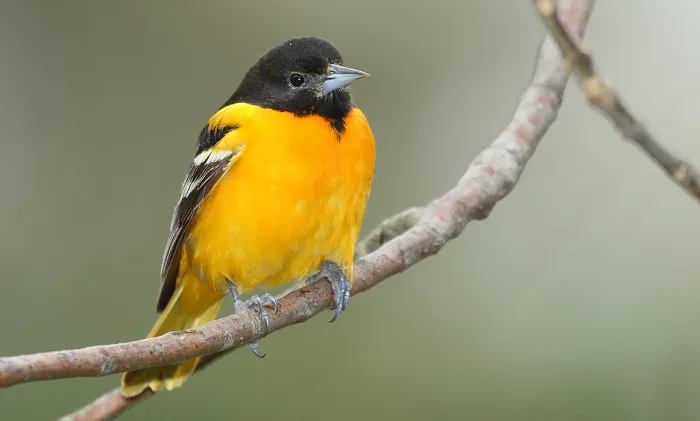
5 backyard birds you can find in Canada
Bird-watching can be a rewarding hobby, and you don't have to leave home to do it.
Let's face it: We're all going to be spending a lot of time at home over the next few weeks.
Fortunately, that doesn't stop the seasons from marching forward and now that spring is here, we'll start to see more and more animals.
Birds are flying back to Canada and will be busy gathering food and building nests.
Here are five common garden birds that can be found in Canada.
THE BLUE JAY
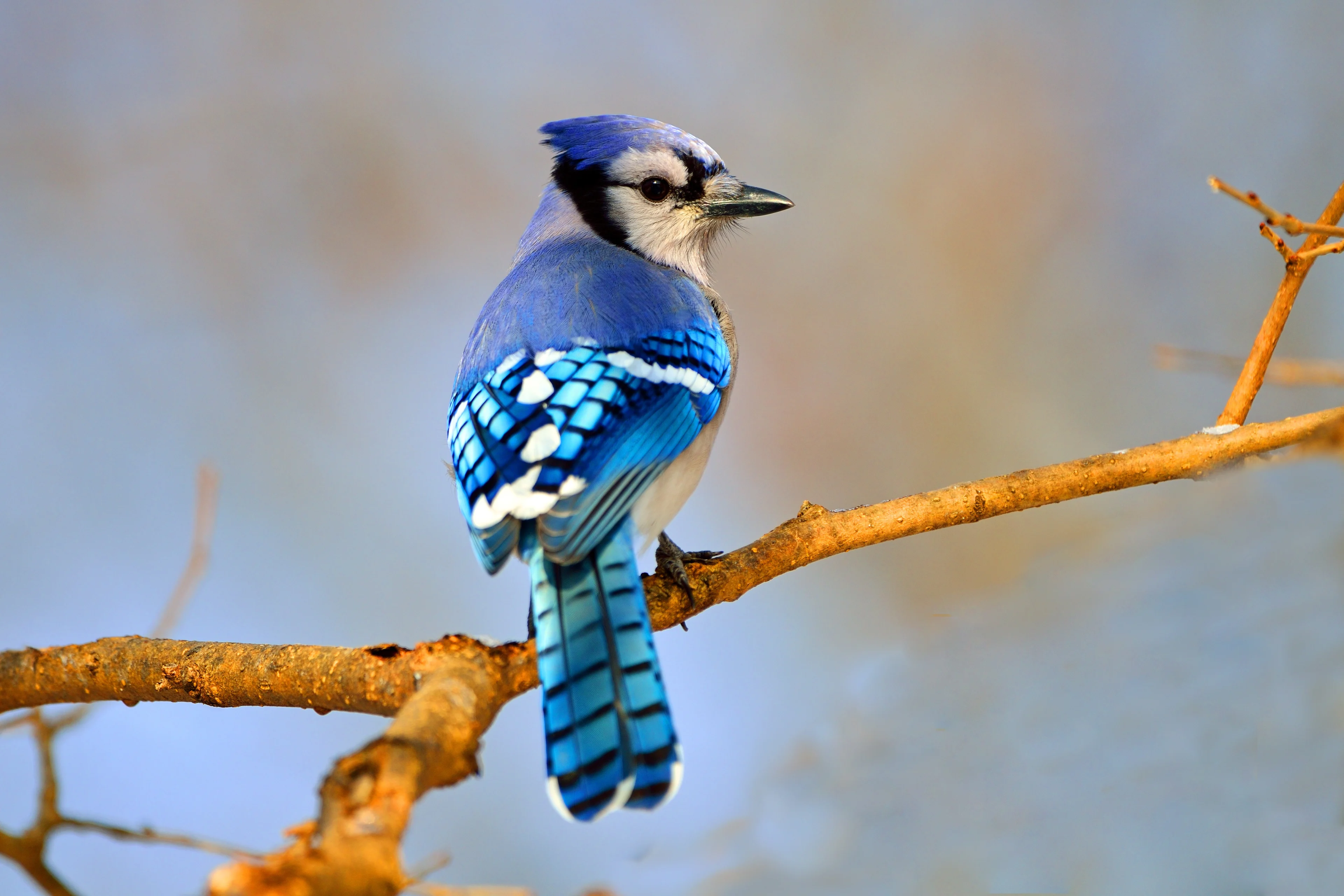
Image courtesy: Getty.
Can be found in: Southern Alberta eastward to Quebec, and throughout Atlantic Canada.
Fast facts: Blue jays can live up to seven years and, believe it or not, their feathers aren't blue. Their colouring is the result of the structure of the feathers which distort the way light is reflected and makes them appear blue. If you were take a Blue Jay feather and grind it up or place it on a white, lit surface, it would look brown, not blue.
We see bright flashes of blue in their feathers due to a trick called "scattering," which is similar to how a prism works. Blue jay wings contain small air pockets that match the wavelength of blue light. When light hits the feathers, all colours pass through them except for blue, which is reflected.
VIDEO: BLUE JAY SEARCHING FOR FOOD IN THE SNOW
DOWNY WOODPECKER
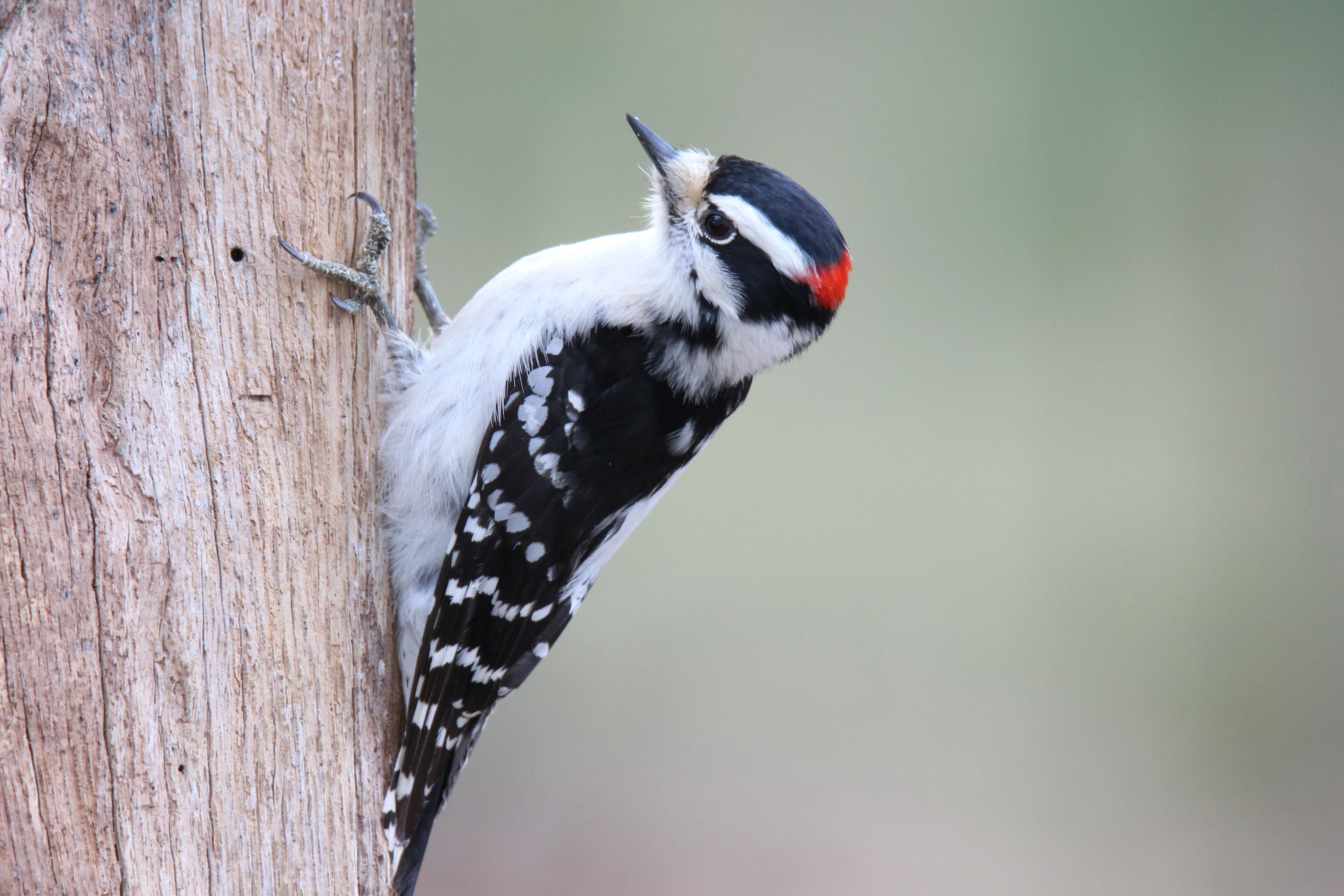
Image courtesy: Getty.
Can be found in: Most of Canada, except for far northern regions.
Fast facts: The downy woodpecker is commonly seen throughout Canada and they're often found on trees, looking for bugs to eat.
They "peck" holes in trees to access their food, and can be helpful to the ecosystem because they will eat destructive or invasive insect species.
VIDEO: DOWNY WOODPECKERS
CEDAR WAXWING
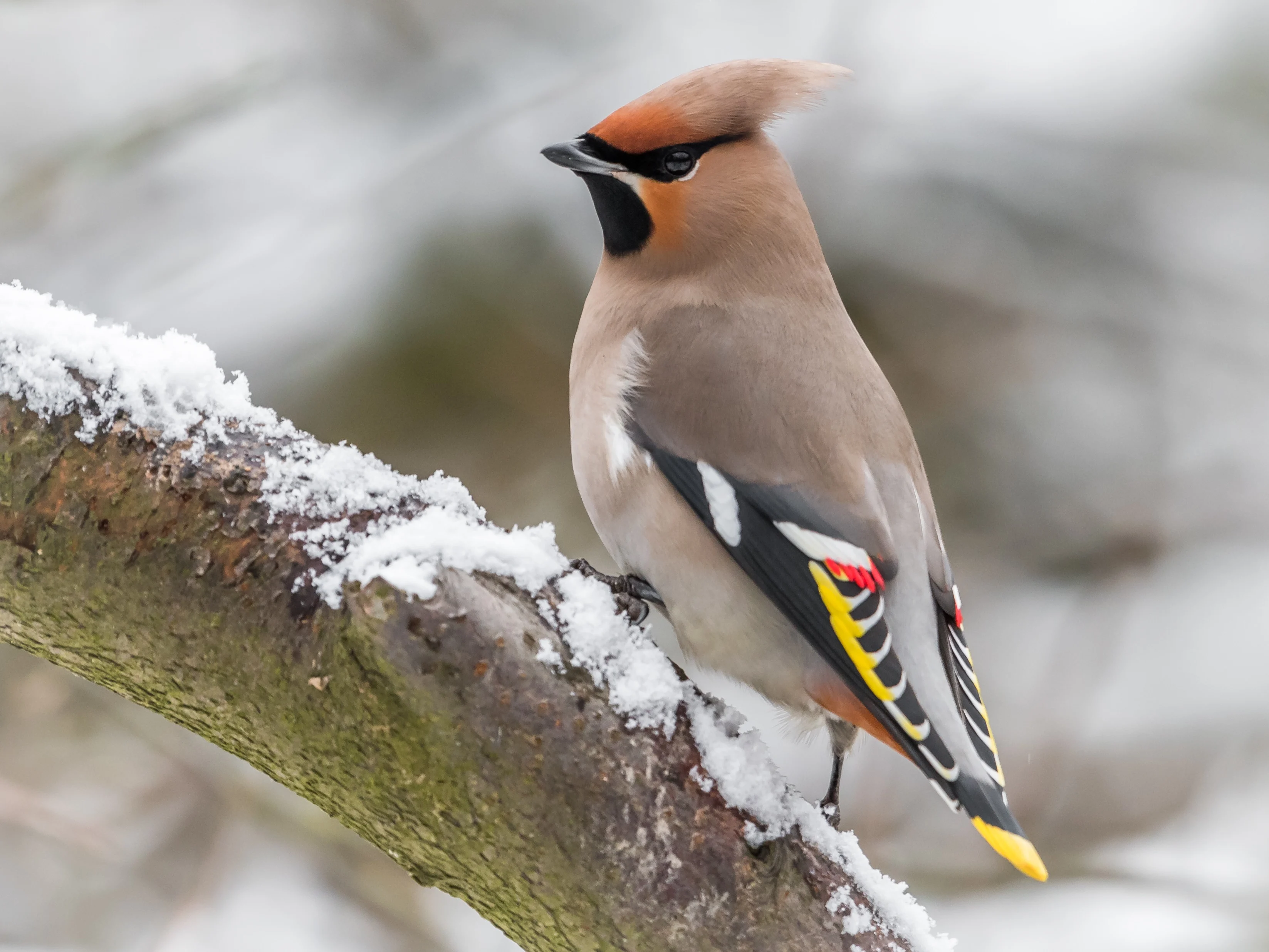
Image courtesy: Getty.
Can be found in: Wooded areas of southern Canada.
Fast facts: Cedar waxwings can be found in wooded areas of southern Canada -- but they will venture into people's backyards if you plant berries for them to eat. Suggestions include: dogwood, serviceberry, cedar, juniper, hawthorn, and winterberry.
SONG SPARROW
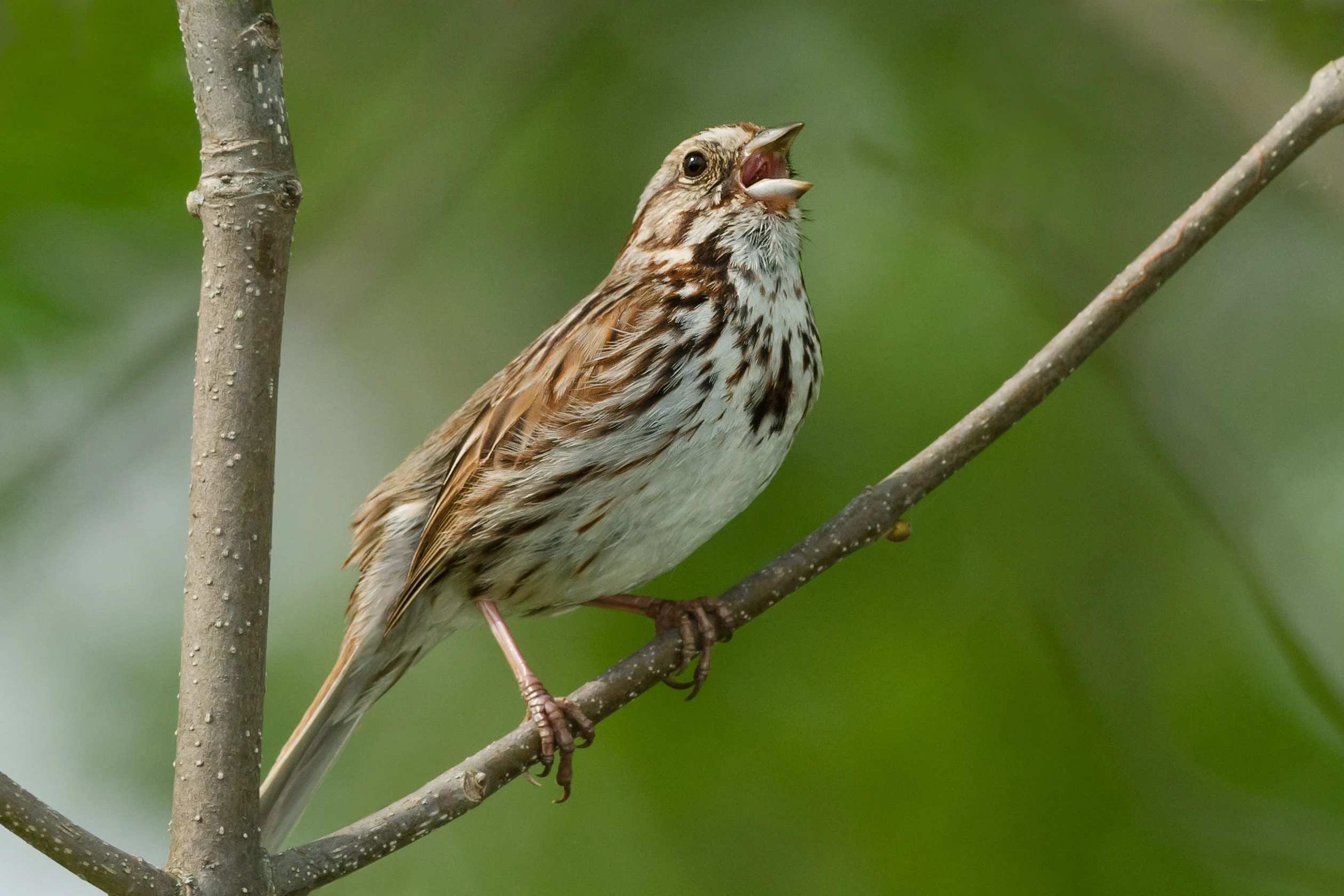
Image courtesy: Getty.
Can be found in: Most of Canada. The song sparrow is one of the most abundant bird species in North America.
Fast facts: Song sparrows use their songs as defense and to attract mates -- and it turns out females like big brains. Research suggests males are more likely to attract a female if they show an ability to change their tune. Males with more components in their songs, or males with songs that resemble the adult birds that taught them, appear to be the most preferred.
BALTIMORE ORIOLE
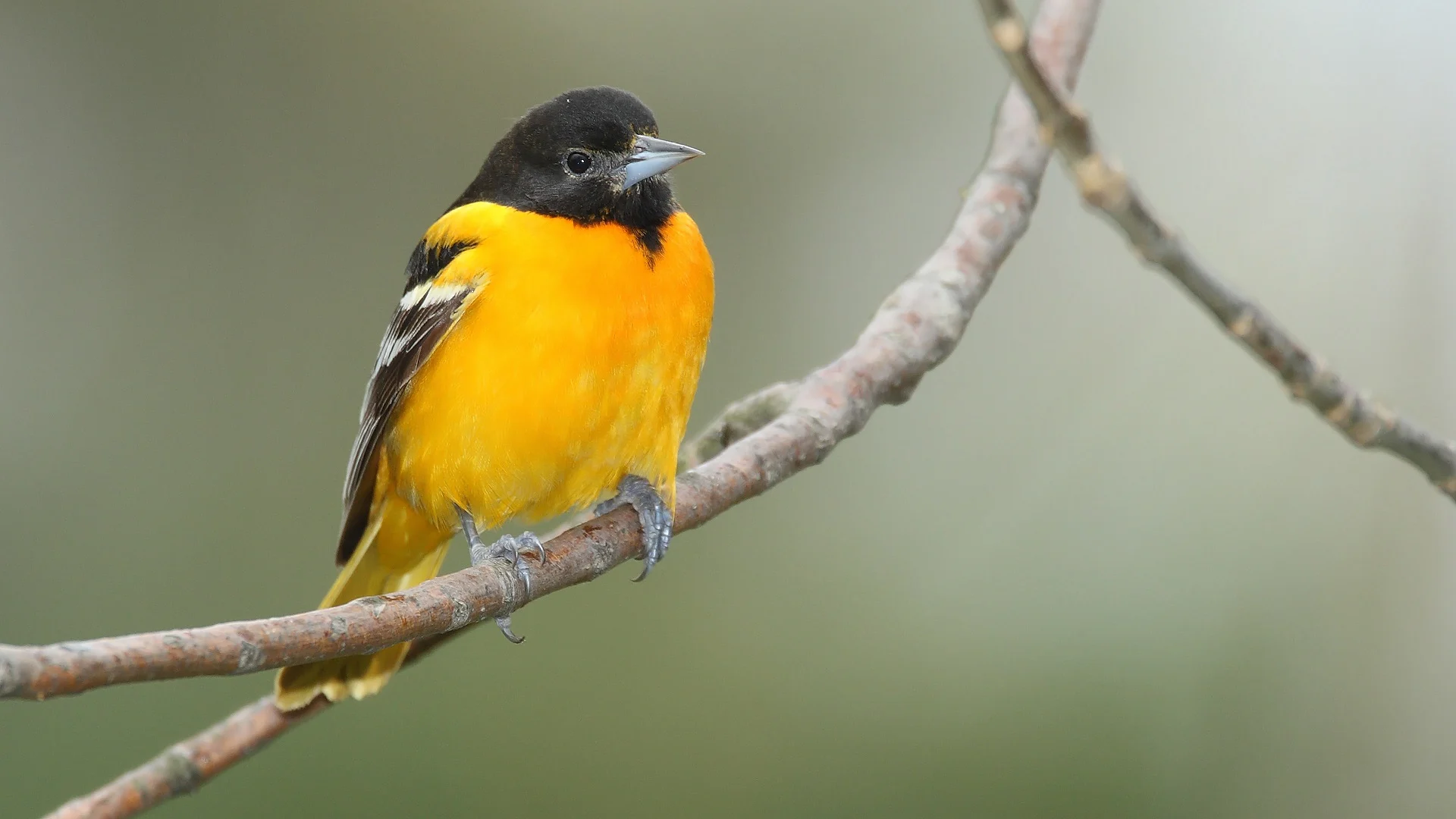
Image courtesy: Wikipedia.
Can be found in: Nova Scotia to British Columbia.
Fast facts: The Baltimore oriole is the official state bird of Maryland, and it is easily recognizable by its fiery golden-orange belly and patches, and black wings and head, although females aren't as flashy. You'll most likely find them in wooded areas dining on fruits, berries and caterpillars that can protect trees from destructive pests.











